Jails Are Closing Across America. Why?
Communities all over the country are shutting their jails. Sometimes this is because of victories like bail reform. But foes of mass incarceration don’t always benefit.
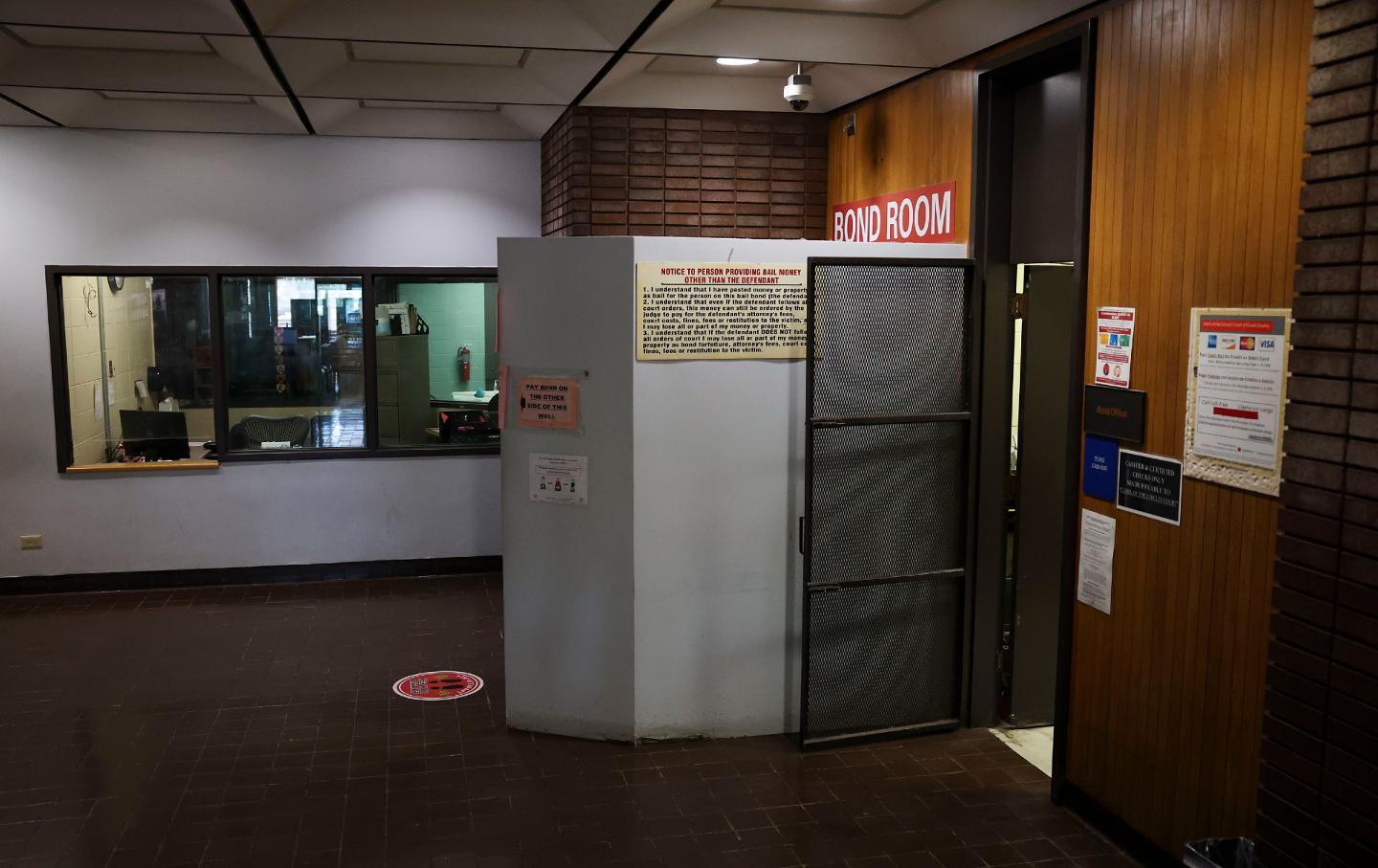
The bond office at Division 5 of the Cook County Department of Corrections is empty on September 18, 2023, in Chicago.
(Eileen T. Meslar / Chicago Tribune / Tribune News Service via Getty Images)Last year, two sheriffs located in the suburban Chicago counties of Kane and Kendall got together to talk about how they wanted to respond to the financial hit their departments were set to take from forthcoming bail reform legislation being implemented by the Illinois government. One solution: shut down one of their jails and consolidate the incarcerated population in the other jail.
For Kendall County Sheriff Dwight Baird, it was simply a numbers decision. “You start looking at the numbers,” Baird told me in an interview, saying he wondered, “How can we, number one, save money and still serve the citizens of our county?”
On September 18, 2023, after a protracted battle in the courts, Illinois became the first state to adopt a cashless bail system. Bail reform has been implemented in New Jersey and New York, but now Illinois has the strongest legislation of any state in the country.
The Kendall County jail has a capacity for 200 people, but typically only holds 50–60 county residents, which Sheriff Baird expected could drop by as much as 30 percent with bail reform. He worked out an arrangement with Sheriff Ron Hain to send his shrinking jail population to Kane County, which has a larger jail and more programs. A four-year contract was approved agreeing to a $75 per diem rate for each person. Sheriff’s deputies will transport people back and forth.
The deal is expected to save Kendall County $1.5 million in the first year, plus $2 million in needed renovations. It is simply more cost-effective for the county than running its own jail.
It’s not just Illinois. Jails across the country have reached a state of “complete meltdown,” the result of a confluence of factors—aging facilities, the Covid-19 pandemic, staffing shortages, and overcrowding among them. Now, bail reform—which naturally reduces the headcount in some jails and weakens their status as a source of revenue—is having a ripple effect as well, in ways that criminal justice reform advocates can both appreciate and be worried by.
A growing number of small communities are considering closing their jails or have closed them already, whether because of bail reform or some of the other issues plaguing the system. But some counties are taking advantage of these changes, entering into contracts with smaller jails to house their incarcerated people at a per diem rate to fill empty beds.
In some places, the problem is framed as an employment issue. In Minnesota, the frequent turnover of staff has led administrators to deem small jails “not sustainable.”
Elsewhere, the language about keeping jails open amounts to thinly veiled rhetoric opposing the Black Lives Matter movement.
Sheriff Jeff Shrader, of Jefferson County, Colo., blamed the “national dialogue” that followed George Floyd’s death. After budget cuts in 2020 forced him to close a wing of his jail, Shrader made the unfounded assertion that it would put more criminals on the streets and cause a rise in crime.
The closure of a jail is theoretically something that can be celebrated by opponents of mass incarceration. But in the absence of more far-reaching reforms, closures can also become a symbol of the resiliency of mass incarceration, even in the face of abolitionist organizing. They can bring new problems, as incarcerated people are moved further away from their families and legal counsel. Other reform-minded sheriffs could profit from these changes, and argue for more “safe” jails—a clear oxymoron.
New Jersey was the first state to see several jail closings in the wake of bail reform, with varied results. In 2014, New Jersey passed bail reform legislation after negotiations between Republican Governor Chris Christie and the Democratic legislature; the law took effect January 1, 2017.
Among the 21 counties in New Jersey, five have closed their jails—Union, Gloucester, Cumberland, Hunterdon, and Passaic—and one, Somerset, is considering closing its jail, which is holding only 125 people, one-third of its capacity.
Popular
“swipe left below to view more authors”Swipe →Union County signed an agreement in 2021 to send its 300 people to nearby Newark to be detained in the Essex County jail. The proposal was presented as a win-win situation, with Union County saving more than $100 million over five years.
“The bail reform policies enacted by New Jersey before the pandemic resulted in fewer people being held at county correctional facilities,” the Essex County executive said in a press release. The Union County jail now merely serves as an intake center and has otherwise been shut down.
“I am someone who when I hear about a jail closure,” said Alex Shalom, attorney at the ACLU of New Jersey, “I figuratively jump for joy…. Newark, which is where the Essex County jail is, has widely available public transportation, there’s parking at the jail. That was a consolidation that we think, worked out well.”
In anticipation of state bail reform, in 2013, Gloucester County, a rural county in South Jersey, was the first to take action and “regionalize” its jail. A year later, the decision was hailed as a success. The deal saved Gloucester County $11 million in the first year, and a projected quarter of a billion dollars over the next 25 years. But the proposal was met with opposition from the police union that feared losing jobs, and the state Public Defenders Office that complained about transport times to visit clients.
Cumberland County, also in South Jersey, was more problematic. In 2021, a judge ruled against an injunction that had blocked the county from closing its jail. Now, approximately two-thirds of those in custody are held in Hudson County, which is a two-and-a-half-hour drive to the opposite end of the state.
“It definitely impacts the attorney-client relationship,” Fletcher Duddy, an attorney for the New Jersey State Public Defenders Office, said in an interview. Duddy said that it’s hard to quantify the impact on the outcome of a case. “Are more people being convicted, or not? I don’t know.”
In New York, bail reform has been hotly contested. Most recently, Governor Kathy Hochul announced a third rollback to the state’s bail system that gives judges greater discretion.
In the first month after the original law took effect January 1, 2020, jail populations went down 20–30 percent. Other counties were already jailing fewer people, some as much as 40 percent less. With the empty space, the sheriff in Albany County converted a wing of the jail into a homeless shelter.
Still, in the face of these falling numbers, counties upstate are still pushing jail projects. In Erie County, home to Buffalo, the sheriff is lobbying for a new $200 million jail and the county executive has already allocated $2.5 million to the idea. Although the jail population is currently around 800 people, they are planning for a new facility with a capacity for 1,500.
Yet bail reform has changed the conversation. With the falling number of incarcerated people, activists have new ammunition to argue against jail expansion.
A letter calling for “no new jail,” was cowritten by Jerome Wright, who spent three decades in prison, and is now a board member at VOICE Buffalo. The letter was endorsed by some 30 organizations.
“The world is moving towards decarceration,” Wright said in an interview. Buffalo was ignoring the larger trends. “If you get 1,500 [beds], you’re going to find a way to get 1,500 people to be in there. Bail reform be damned.”
Back in Illinois, Kane County Sheriff Ron Hain promotes himself as a reformer who has brought many “innovative” programs to his jail. Hain explained to me that when he came into office in 2019, he created “a litany of different programming, employment training, and then employment placement, and addiction reentry support.” He has opened a recovery pod to offer services.
He successfully convinced Kendall County to send their jail population, along with money to house the additional people. Only a handful of men and women have been moved, with more to be transferred as bail reform goes into effect. The Kane County jail can hold 640 people but is only at half its capacity.
Hain said he is sympathetic to those in his jail who have “never been given an opportunity in their life.” Whether he is sincere, or merely rebranding incarceration, remains to be seen. A punitive court system and long terms of incarceration are still the common responses to the problems in communities impacted by issues drug addiction, poverty, and gun violence.
Jerome Wright is doubtful that recovery, for example, can ever happen in jail. “A troubled mind alone in his cell by himself,” Wright said, “is a recipe for suicide, self-harm, and recidivism.”
Disobey authoritarians, support The Nation
Over the past year you’ve read Nation writers like Elie Mystal, Kaveh Akbar, John Nichols, Joan Walsh, Bryce Covert, Dave Zirin, Jeet Heer, Michael T. Klare, Katha Pollitt, Amy Littlefield, Gregg Gonsalves, and Sasha Abramsky take on the Trump family’s corruption, set the record straight about Robert F. Kennedy Jr.’s catastrophic Make America Healthy Again movement, survey the fallout and human cost of the DOGE wrecking ball, anticipate the Supreme Court’s dangerous antidemocratic rulings, and amplify successful tactics of resistance on the streets and in Congress.
We publish these stories because when members of our communities are being abducted, household debt is climbing, and AI data centers are causing water and electricity shortages, we have a duty as journalists to do all we can to inform the public.
In 2026, our aim is to do more than ever before—but we need your support to make that happen.
Through December 31, a generous donor will match all donations up to $75,000. That means that your contribution will be doubled, dollar for dollar. If we hit the full match, we’ll be starting 2026 with $150,000 to invest in the stories that impact real people’s lives—the kinds of stories that billionaire-owned, corporate-backed outlets aren’t covering.
With your support, our team will publish major stories that the president and his allies won’t want you to read. We’ll cover the emerging military-tech industrial complex and matters of war, peace, and surveillance, as well as the affordability crisis, hunger, housing, healthcare, the environment, attacks on reproductive rights, and much more. At the same time, we’ll imagine alternatives to Trumpian rule and uplift efforts to create a better world, here and now.
While your gift has twice the impact, I’m asking you to support The Nation with a donation today. You’ll empower the journalists, editors, and fact-checkers best equipped to hold this authoritarian administration to account.
I hope you won’t miss this moment—donate to The Nation today.
Onward,
Katrina vanden Heuvel
Editor and publisher, The Nation
More from The Nation

Breaking the LAPD’s Choke Hold Breaking the LAPD’s Choke Hold
How the late-20th-century battles over race and policing in Los Angeles foreshadowed the Trump era.
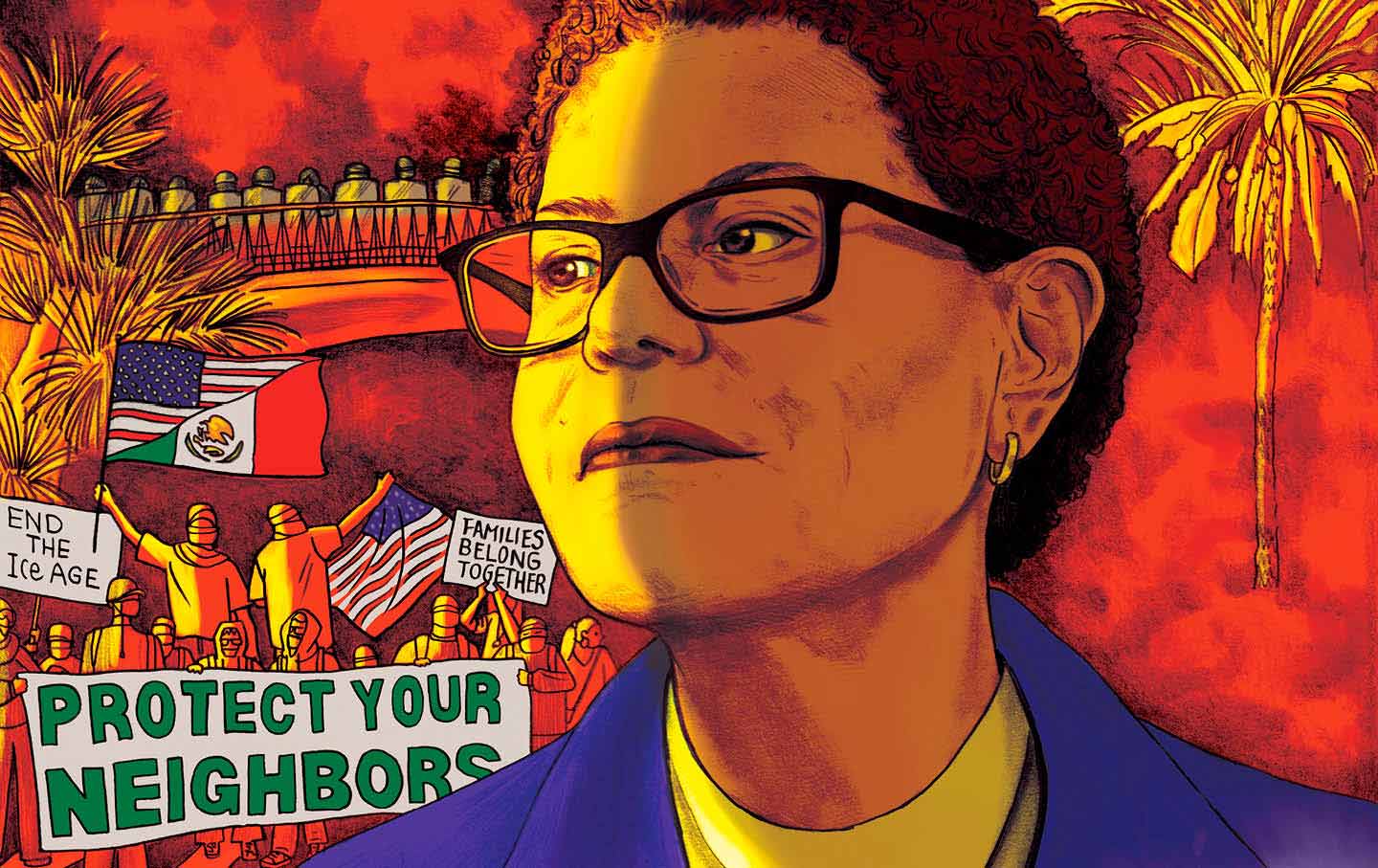
Mayor of LA to America: “Beware!” Mayor of LA to America: “Beware!”
Trump has made Los Angeles a testing ground for military intervention on our streets. Mayor Karen Bass says her city has become an example for how to fight back.
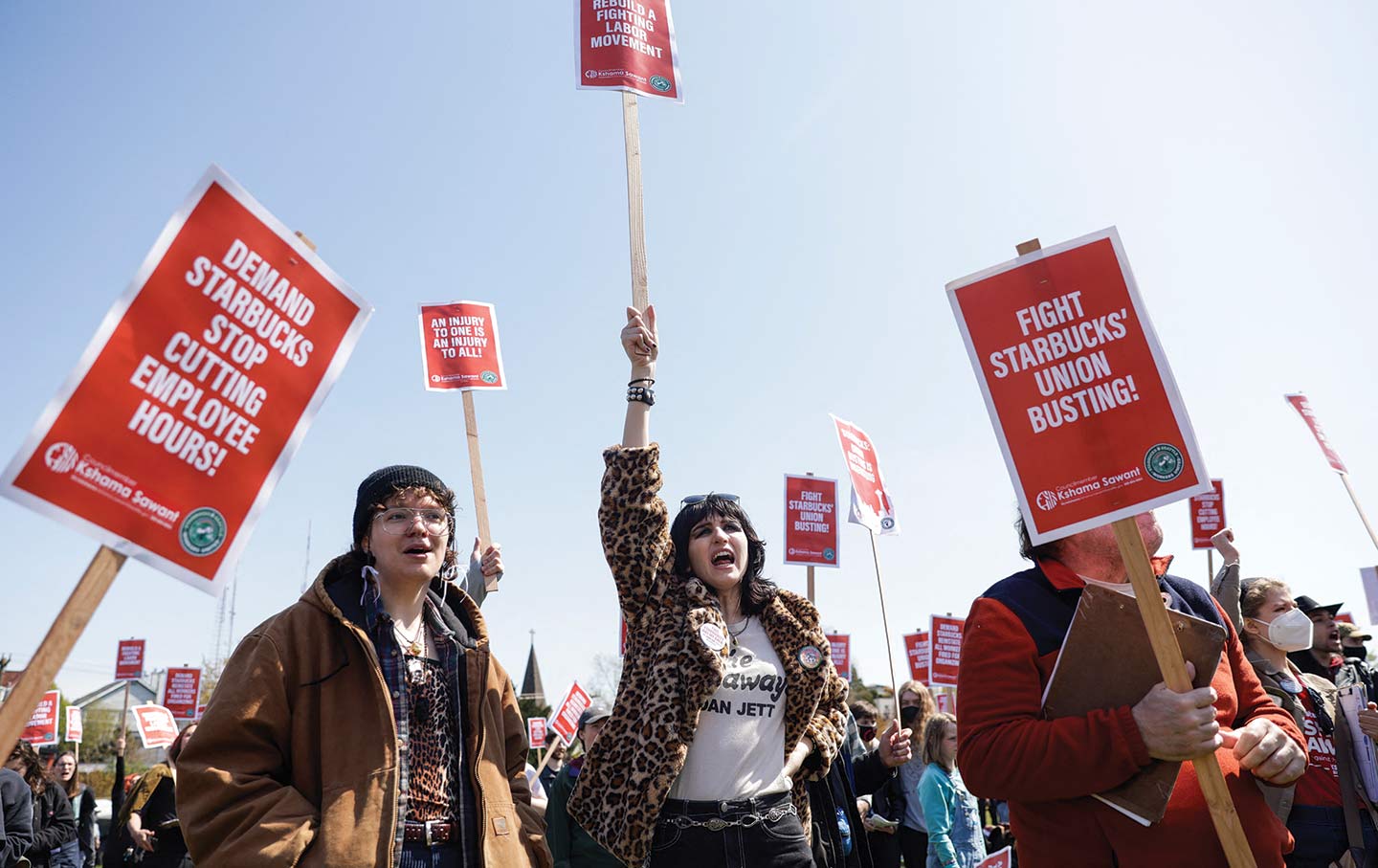
Organized Labor at a Crossroads Organized Labor at a Crossroads
How can unions adapt to a new landscape of work?
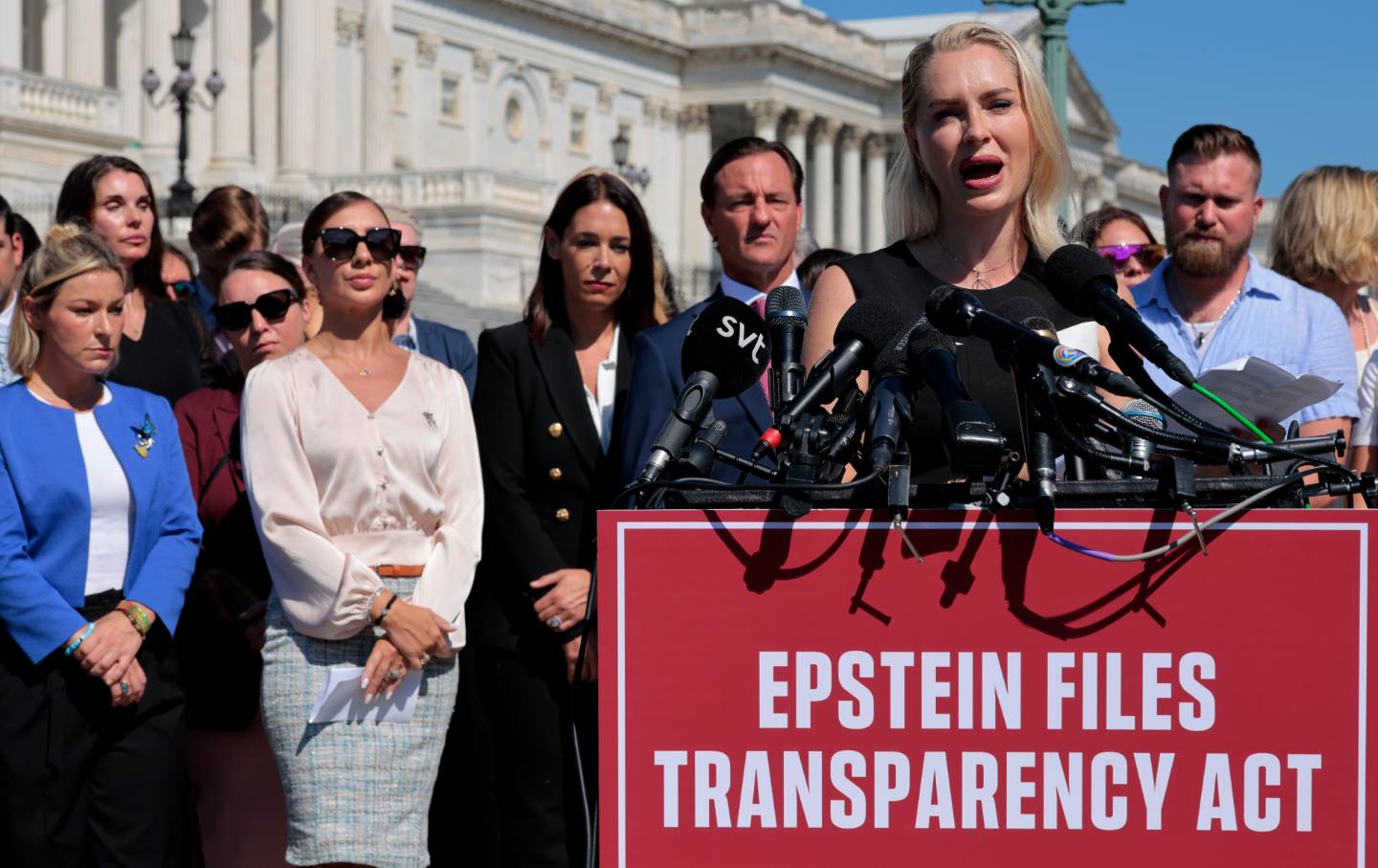
The Epstein Survivors Are Demanding Accountability Now The Epstein Survivors Are Demanding Accountability Now
The passage of the Epstein Files Transparency Act is a big step—but its champions are keeping the pressure on.
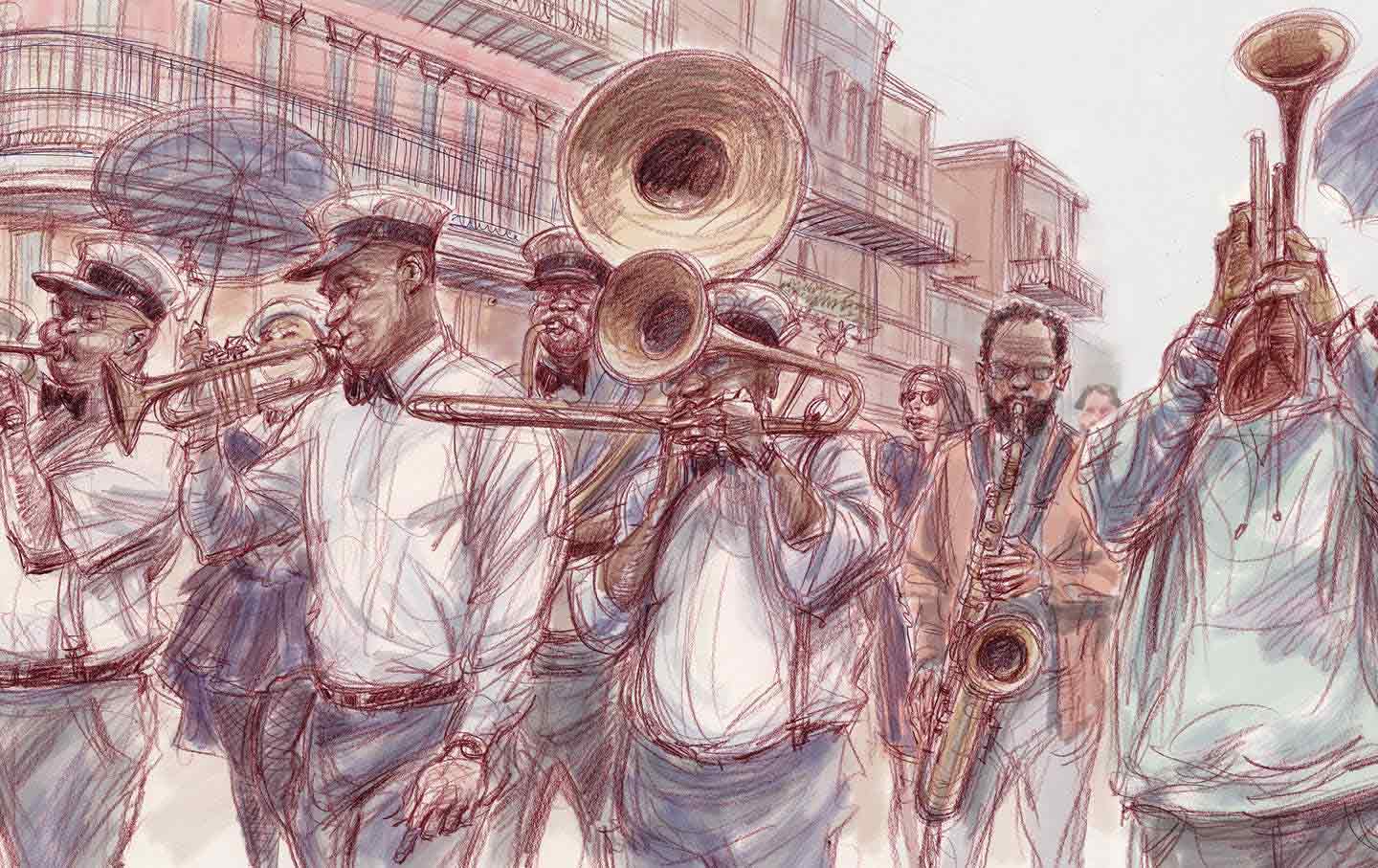
The Fight to Keep New Orleans From Becoming “Everywhere Else” The Fight to Keep New Orleans From Becoming “Everywhere Else”
Twenty years after Katrina, the cultural workers who kept New Orleans alive are demanding not to be pushed aside.

The WNBA Makes More Money Than Ever. What About the Players? The WNBA Makes More Money Than Ever. What About the Players?
WNBA players receive around 10 percent of league revenue, while the NBA gives 51 percent. With their bargaining agreement expiring in January, players want to share in the growth....


